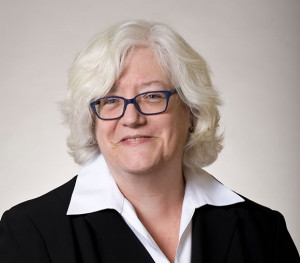Affiliation: University of California, Berkeley

Rosemary Joyce is Professor of Anthropology at the University of California, Berkeley. She received her degrees from Cornell University and the University of Illinois at Urbana-Champaign (Ph.D.). She specializes in the archaeology of Mesoamerica and Central America, focusing on materiality and the archaeology of inequality, gender, sex, and sexuality, and cultural heritage policy. Her current research projects include “Urban Life at Palenque, Chiapas” (supported by an NEH grant), and “A Medieval Honduran Alchemy”. Her most recent book is A Past for Nuclear Waste: Archaeology, Archetypes, and Art (Oxford University Press). Professor Joyce has received numerous awards and honors for her work.
How can we ensure that people in the distant future do not excavate hazardous waste that we are burying today, produced from military and civilian nuclear programs? When the US government faced that challenge, it turned to cross-disciplinary “experts” for advice. Two very different proposals emerged from planning, both based on assuming that we can abstract features from monuments built in the distant past that helped them survive physically, to convey messages to us today. Much of what these experts proposed drew on common sense ideas about sites that archaeologists study. But where the experts saw predictability, an archaeologist today sees more unpredictable effects. Where the experts assumed things that have lasted for thousands of years were intended to do so, archaeologists demonstrate how survival is sometimes an outcome of unanticipated effects: things we see as monuments today were rarely, if ever, intended to survive for us. Even the assumptions the planners made about the materials used in sites like Stonehenge turn out to be questionable, based more on what people think about substances like granite and kitty litter than how those materials actually behave. This talk explores how we might think about long term survival drawing on what archaeology actually shows.
The global nuclear industry has for drawn on sites like Stonehenge for decades to justify proposals for long-term markers to be placed over nuclear waste repositories. In the US, the result has been a proposal to build a pre-formed archaeological site, a ruin that would qualify for listing as a World Heritage site in the future. Alternative proposals, some from the same planning process, others from activism in opposition to the nuclear industry, present art projects as alternative ways of marking contaminated landscapes. Moving back and forth between the proposals rooted cultural heritage thinking, and those from art worlds, this talk questions both as imagining human intentions as singularly effective over spans of thousands of years. An archaeological perspective on how materials endure and decay calls us to question the intelligibility of landscape scale installations conceived of as simple visual markers, and instead, demands that we think about how these might be encountered in futures like those imagined by authors of science fiction or artists responsible for large scale “Land Art” installations.
See Rosemary Joyce's work in the American Journal of Archaeology.